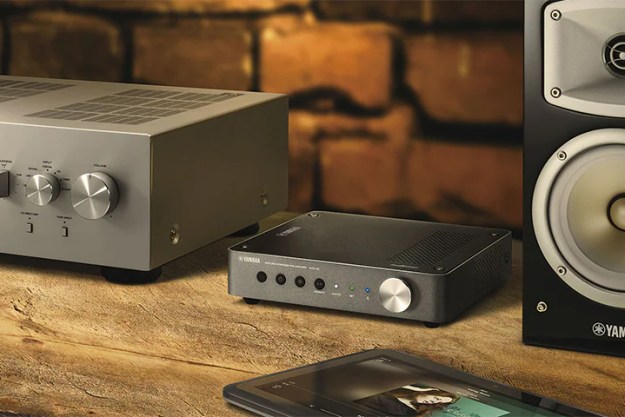Looks like those rumors that Amazon was planning a hi-res music tier for its Amazon Music service were true: Today the company has announced Amazon Music HD, an upgraded tier for Amazon Music Unlimited that features both lossless CD-quality streams for over 50 million tracks, and millions of better-than-CD, hi-res quality tracks.
Amazon’s new service is substantially similar to Tidal’s HiFi subscription tier but with one very big difference: Amazon is only charging $13 per month for Prime members, or $15 per month for non-Prime members. Tidal’s HiFi service costs $20 per month.
Current Amazon Music Unlimited subscribers can upgrade their plans to Amazon Music HD for an additional $5 per month. The new level of service is now available in the U.S., UK, Germany, and Japan. What’s more, 90-day free trials are available for new and existing subscribers.
Most on-demand music
Not everyone finds these compressed digital files acceptable in terms of audio quality. CD-quality — the same resolution you’ll find on a professionally published CD — is considered a much better option by audiophiles, which is why many choose to use FLAC or ALAC files instead of MP3s. These uncompressed digital files preserve 100% of the information on a CD but at a smaller file size.
FLAC is the format used by Amazon Music HD (and Tidal HiFi) for its entire 50 million+ track library. These tracks will consume more bandwidth (in some cases up to twice as much as compressed music) — up to 820 kbps — but the tradeoff is better sound for those with high-quality audio gear. In borrowing from the TV world, Amazon calls the tracks HD.
But Amazon Music HD also offers a subset of these 50 million songs in a hi-res format it calls Ultra HD. Hi-res tracks go beyond CD-quality by re-encoding the studio master recordings at a greater bit-depth and sample rate than was used to create the CD-quality files. Supporters of hi-res music, like Neil Young, claim it delivers the closest thing to what the artist intended when they recorded their music. “Earth will be changed forever when Amazon introduces high-quality streaming to the masses,” he said in a press release. “This will be the biggest thing to happen in music since the introduction of digital audio 40 years ago.”
There are two major drawbacks to hi-res music, however. File sizes tend to be enormous — Amazon’s Ultra HD FLAC tracks stream at 3730 kbps — and they aren’t always compatible with people’s chosen devices like smartphones. Tidal’s HiFi tier uses a hi-res format called MQA, which employs a sophisticated file packaging system to partially overcome the bandwidth requirements of hi-res.
Amazon claims that Amazon Music HD will automatically stream at the highest possible quality that your device supports unless you indicate otherwise in your settings. Curiously, Amazon’s own Echo and Fire streaming devices are only compatible with the HD level of service, not the hi-res Ultra HD tracks. Also, not all third-party devices that support Amazon Music will work with Ultra HD tracks. Sonos speakers, for instance, will only work with the HD level of quality.
Whether or not this latest move from Amazon will give it more clout in the game to compete with the top streamers in Spotify and Apple Music remains to be seen. If nothing else, today’s move should put more pressure on the most popular services to work on their own lossless tiers.
Updated September 17, 3:08 PT: Amazon has clarified that it uses FLAC for both its HD and Ultra HD quality levels.
Editors' Recommendations
- What is Qobuz? Music, features, and pricing explained
- Amazon Music follows Spotify’s lead with Maestro, an AI-based playlist creator
- Next-gen wireless headphones will get lossless hi-res audio with a little help from Qualcomm
- What is Amazon Music: everything you need to know
- How much is Apple Music, and how can you get it for free?




